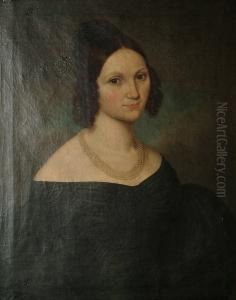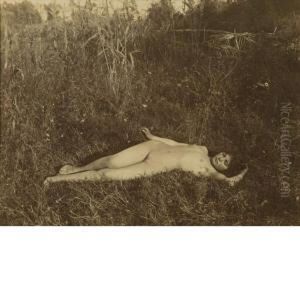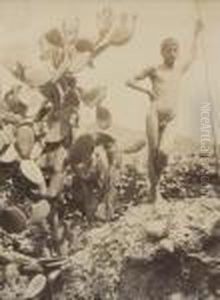Wilhem Von Pluschow Paintings
Wilhelm von Gloeden, commonly known as Wilhelm von Plüschow, was a German photographer who is primarily known for his pastoral nude studies of Sicilian boys and men. Born in Wismar, in the Grand Duchy of Mecklenburg-Schwerin, on August 18, 1852, he was a cousin of the more famous photographer Wilhelm von Gloeden, who shared a similar aesthetic and also worked in Italy.
Plüschow initially pursued a career in the merchant navy but soon developed a passion for photography. In the late 19th century, he moved to Italy, the center of the Grand Tour, where both the landscape and the relaxed attitudes towards nudity offered an ideal setting for his work. He settled in Rome and later moved to Naples. His photographs often featured classical poses inspired by ancient Greek and Roman art, which appealed to the sensibilities of the European elite of the time.
The subjects of von Plüschow's photographs were typically young male nudes, which he posed in natural settings such as the beaches or cliffs of Capri and the countryside around Rome. His work was characterized by a careful attention to composition and lighting, and he was renowned for his ability to capture the beauty of the male form. Von Plüschow's photography was not merely aesthetic; it also had an erotic dimension, which made it controversial yet popular among certain circles.
Despite his success, von Plüschow's career was marred by scandal. In 1902, he was charged with corruption of minors and the distribution of indecent images and was subsequently convicted. This greatly affected his reputation and his ability to work freely. After his conviction, von Plüschow became more cautious, but he continued to produce photographs, although they were less explicit.
He returned to Germany in 1910 and died in obscurity in Potsdam on January 3, 1930. His work was largely forgotten until it was rediscovered and reassessed in the latter half of the 20th century, when it began to be more widely appreciated for its artistic value and its pioneering role in the history of homoerotic photography. Today, von Plüschow's photographs are considered important historical documents of the male nude, as well as significant works of early photography.


